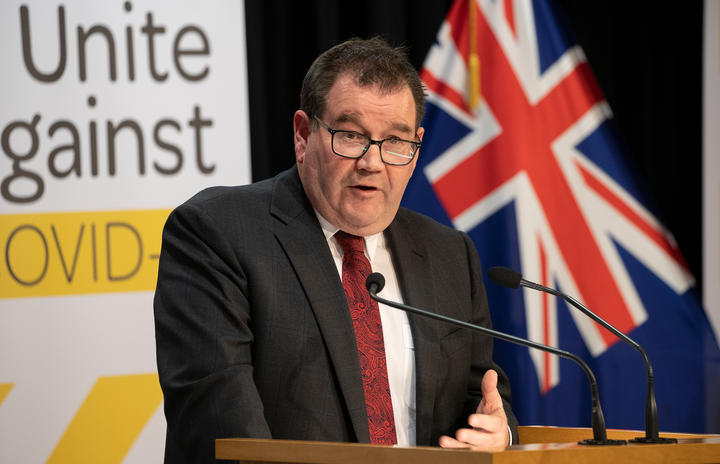
To those on the left, who hope the Government will have crafted a new, green utopia: forget it. Like the rest of us, they're still trying to work out what's hit them.
There will be plenty of nods in the direction of climate change resilience, but also plenty of new roads and fast-track resource management legislation to get the economy moving again.
To the promoters of so-called 'shovel-ready' projects, who hope $170 billion of aspiration can be jammed into maybe $5 billion to $10 billion of immediately available capital spending: forget it.
The list of possible projects is so long and the ability to fund them so inevitably limited that there will be disappointment aplenty.
To small and medium-sized business owners hoping there's more in the kitty for them: forget it. The wage subsidy scheme and the various cashflow measures to date - in particular, the almost haphazard conversion of the tax department into a bank of last resort - are probably as good as it's going to get.
HELP FOR TOURISM
The only likely exceptions to that: tourism operators and associated parts of hospitality and the events sector.
Even there, there is only so much a government can do when the reality for many is that their businesses will be either much smaller or unable to operate until international tourists return - whenever that may be.
Some of the help for these sectors will target retraining for the employees who must swiftly find a new trade.
Even trade unions, who have been closer to the emergency policy-making action than they have been for years during normal times, may not welcome Finance Minister Grant Robertson's enthusiasm for encouraging small, entrepreneurial businesses to flourish.
Disappointed, too, will be the modern monetary policy theorists who think central banks should simply fund everything that everybody wants out of thin air. It is tempting to think that's already happening, with the Reserve Bank pumping up financial market liquidity by buying government bonds at unprecedented levels.
But Robertson is no fan of that. He knows debt created today must, some day in some way, be paid back. And he values the fact that New Zealand has had its super-strong credit ratings reconfirmed in recent days. Maintaining that credibility - hard-won over the past four decades - remains important for a small, open economy.
However, Roger Douglas, who kicked off that path to credibility, will be disappointed too. Robertson delivered a curt "no" when asked last week whether he'd read the latest think-piece from the reforming Labour finance minister whose radical egalitarianism remains as chronically misunderstood as ever.
ON THE BACKBURNER
Perhaps most disappointed of all will be those who were looking forward to the progressive political investment agenda outlined in the Budget policy statement in December last year. Robertson was very clear last week: unless there are cost pressures that must be addressed, those priorities are shelved for now.
Nor will there be much, if anything, for anyone hoping for a fairer tax system. It is far too early to start raising taxes to pay for the current debt pile-up and it would be political suicide to broach the debate that must be revived about the taxation of wealth.
For taxpayers on middle incomes who are now paying the top income tax rate, there might be a skerrick of relief, but dealing to fiscal drag is something even governments with strong books resist. Now is not the time.
A UTILITARIAN SHORTLIST
Instead, this Budget is a first, inevitably imperfect attempt to get to grips with one of the biggest shocks the New Zealand economy has ever experienced, and which is not over yet.
So, rather than a utopian wishlist, how about a utilitarian shortlist of five key things to watch for in this Thursday's Budget?
1 - Budget surpluses
Firstly, will the word 'surplus' appear in the Budget documents? For all Robertson's rejection of Roger Douglas, it is an enduring Douglas legacy that New Zealand governments have both striven for and produced Budget surpluses whenever they could during the past 30 years.
In an interview last week, Robertson avoided the word, carefully defining his ambition as a "sustainable" fiscal position, with a focus more on the level of net Crown debt than whether income exceeds expenditure any time in the next decade.
That may simply be prudent. It's likely that current forecasts show Budget deficits as far as the eye can see because of the size of the economic crater made by covid-19.
However, the rhetorical ambition to return to surplus is a political as much as an economic totem. Its inclusion or exclusion will be significant in itself.
2 - Treasury forecasts
On Budget day, it will be exactly a month since the Treasury released its first set of scenarios outlining possible paths for the economy post-covid.
These were not forecasts but guesstimates based on various possible outcomes for the global and domestic economy. If anything, the scenarios given greatest credence were less apocalyptic than might have been expected. Unemployment was low, back under 5 percent, within four years and the economy bounces back strongly to be as large in 2022 as it was in 2019.
That picture will have changed in the intervening weeks, but by how much?
The important thing will be the direction rather than the extent of change. No one can accurately predict anything about the economy right now. The disruption is so great that Statistics New Zealand probably can't even be sure it's collecting all the right data at the moment.
Instead, it's the frequency of updates that matters. This week's forecasts are a way-station before the production of pre-election fiscal and economic updates in late August, assuming the election goes ahead on Sept. 19.
3 - Level 1 and the trans-Tasman travel bubble
The Australian government has so far been franker than ours about a timeline to something close to normal life, which includes the potential for open borders between Australia and New Zealand. Aussie Prime Minister Scott Morrison has talked about the bubble being in place by July. Being able to travel across the Ditch again is less significant than the powerful signal that such a relaxation will give, acting as both a fillip to confidence and as a proxy for confirmation that both countries have the virus under control.
Will our government chance its arm by nominating its own timetable, or maintain its currently more conservative stance?
4 - Articulation of a vision
Robertson talked last week about the opportunity to use covid-19 to "build back better." It should be far too early to give anything more than a verbal outline of what this means, with perhaps one or two symbolic but probably low-cost pointers.
However, the way the government talks about the role of government in this Budget is vital. If it says too little, it will be suspected of developing an agenda that it doesn't want to discuss before the election.
Equally, it must judge carefully how much and exactly what it says about these ambitions because they will be key to the themes of the election campaign. The government is already a far larger player in the economy than it was possible even to imagine two months ago.
For some, this is an opportunity to rebuild a fairer, better society and economy. For others, it threatens to march New Zealand backwards into a low productivity, state-directed future where capital is allocated politically and a generation of economic rationalism is unwound.
By the time the election rolls around, the covid-19 virus will be less the focus than the unemployment, business closures and hardship its impact will wreak. The competition of ideas for how best to get out of this mess will be intense. The Budget is the government's throat-clearing moment for that contest.
5 - How Simon Bridges reacts
The National Party leader has fallen twice at crucial hurdles - first when the initial level 4 lockdown was announced and second in reaction to the move to level 3.
The Budget is a third such hurdle.
If Simon Bridges pitches his tone wrong again this week, the chances of a reluctant but unavoidable attempt at a leadership coup will go through the roof.
- By Pattrick Smellie












